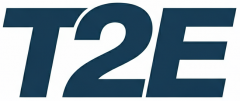Today, tech execs are concerned about the mainframe computer application code. Many companies have had mainframe computers since the 70s and 80s. Large companies, particularly in insurance and finance, built applications during that time that still run on mainframes now. These applications consist of mostly COBOL code, with millions of lines.
SIDE NOTE: COBOL is the oldest still used programming language, developed in 1959. The only other language even close in age is C, which was developed in the early 70’s.
Today’s mainframe computers have powerful processors and seamlessly run COBOL applications alongside Docker containers. Tech executives face challenges with complex COBOL, PL/1, and Assembler code, as well as managing decades of data in diverse environments like DB2, MySQL, and Oracle. We’ll discuss data in a future post.
Mainframe applications have long been vital for enterprise business processing. They were game-changers, and still handle key workloads effectively. However, the drive to convert or move these applications has been slow. Today, tech execs face fierce competition in aggressive markets. Outdated systems hinder companies from keeping up with innovative rivals. Cloud computing enables competitors to invest in new systems without hardware burdens. Consequently, older companies face disadvantages and must modernize their legacy application environment. The three reasons for this transformation are:
- Agility: Companies need IT systems that can be updated for functional processing requirements in a timelier manner. Shorter development cycles are a must for organizations to keep pace.
- Cost: The mainframe is the costliest computer available. In many organizations, it’s also difficult and time consuming to maintain. The complexity of the code and data environments makes keeping the systems up and running difficult. Modern cloud technologies offer a significant reduction in cost of ownership.
- Risk: Knowledge of legacy environments is fading away as programmers who developed this code many years ago retire. Skills in COBOL, PL/1, CICS, etc. are becoming scarce, making managing the applications and responding to major incidences more challenging.
To remain competitive, organizations must tackle legacy mainframe systems. The transformation should uncover the current state and map out an ideal future state. Develop a value proposition with a total cost of ownership analysis for transitioning to the cloud. When it comes to maintaining the mainframe and harnessing the power of the cloud, it’s worth considering strategies from industry leaders like IBM. Take into account the costs of migration and retooling, but also weigh them against the benefits of ownership. Furthermore, take the time to explore the numerous advantages that cloud computing has to offer.
Click here for a post on deciding whether to move from AS400’s or not.
You may also like:

 Welcome to the Tech Historical Lessons category on tech2exec. History is a valuable teacher, and it has much to offer in terms of insights for tech executives. By looking back at past events, we can gain a better understanding of how certain decisions and actions have shaped the technological landscape we see today.
Welcome to the Tech Historical Lessons category on tech2exec. History is a valuable teacher, and it has much to offer in terms of insights for tech executives. By looking back at past events, we can gain a better understanding of how certain decisions and actions have shaped the technological landscape we see today.




